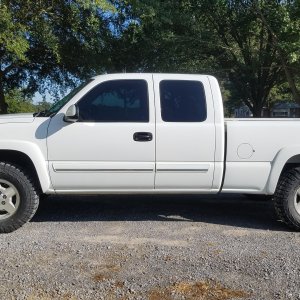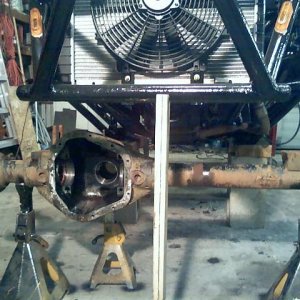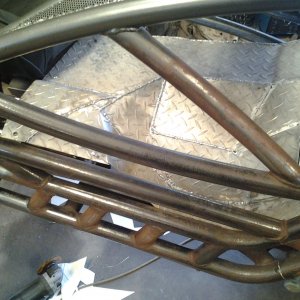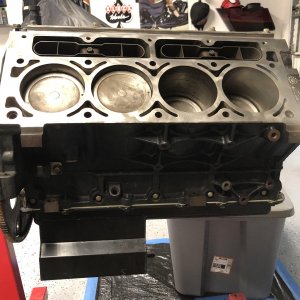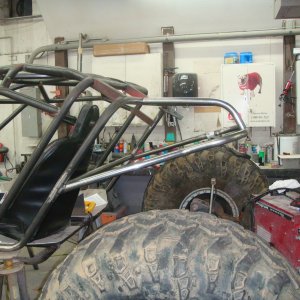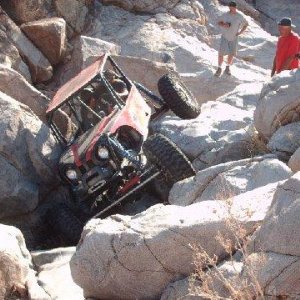Okay--color me stupid.....Are you saying a light rig(sami) will have the same ground pressure as as say.....a suburban? If they're both at say 10 psi tire pressure? :eeek:
I'm not sure exactly what "ground pressure" means. Not because I don't understand the forces involved, but because it's not a real term. My interpretation of Skid Mark's original post seems to indicate that it's the weight of the vehicle (at each tire) divided by the contact patch area. My assertion is that you could save yourself a lot of drawing, measuring, weighing, and calculating by just using a tire pressure gauge.
Here's why: the pressure inside the tire is (more or less) equal to the pressure outside. It's not exact because the stiffness of the tire carcass and the shape of the tread at the shoulders may affect the uniform deflection of the tire, causing non-uniform pressure within the contact patch. It's not perfect, but it's a lot more accurate than chalk on the ground.
I'll explain a little bit more explicitly what I'm saying using bits from your scenario and some make-believe numbers. We have a Zuk and Burb, both on 33x12.50 BFG MTs at 10 psi. For simplicity's sake, they both have a 50/50 weight bias. Each tire of the Zuk has a downward force of 750 pounds. Each tire of the Burb has a downward force of 1500 pounds.
Using those numbers, the contact patch of the Zuk's tire is 75 square inches; the Burb's is 150 square inches. The contact patch must be twice the size because the force is doubled, but the pressure (which is measured in force/area) remains the same. If you built a device to measure the weight over a 6"x6" area under the contact patch of each rig's tires, it would read the same weight for both rigs (roughly 360 pounds).
To extraploate further, I'm guessing the BFG MT's tread pattern to be about 75% void space, which means the weight distributed over the entire contact patch is actually being carried on about 25% of the "contact patch" area. So the contact pressure of the tread block against the surface is actually more like 40psi.
To further the uncertainty, every tire size and tread pattern has a different void percentage.
That's why this whole thread makes no sense. It would have been much more informative and useful to ask "What tire pressure do you run for different terrains?"



